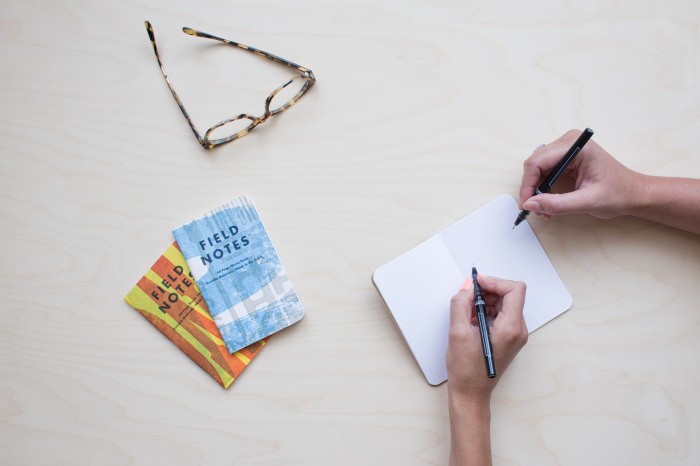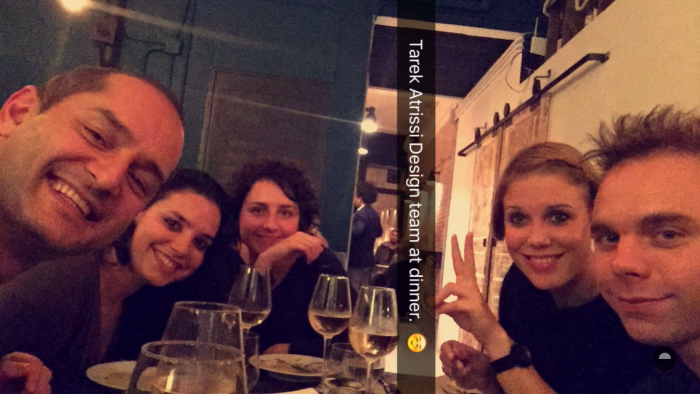
Courtesy of Death to Stock Photo
It’s been exactly 3 months since I left Barcelona where I spent another 3 months interning for Tarek Atrissi, a Lebanese graphic designer who runs his own design studio out of the Catalonian city after relocating from the colder Hilversum, the Netherlands.
I’ve written a lot about what I did to prepare for this trip and what I learned on a personal level while there but I thought it would be helpful to see what I got out of this trip from a professional standpoint as a designer from and working in the Arab world. The environment of Barcelona seemed like an unconventional backdrop for learning about Arabic type & script but it made one thing more evident: capable designers with a background in Arabic design are needed, regardless of location.
Lesson 1: The Difference between Arabic Typography, Lettering, and Calligraphy
As an introduction, Tarek walked me through a breakdown of different uses of the Arabic language in design. Typography refers to creating typefaces or designing a print layout using Arabic text. Lettering is when Arabic letters or words are built by drawing them out piece by piece. The focus would be on one element as an artistic composition or unit instead of an entire alphabet or page of text. Calligraphy is an old artform that takes years to reach the pro level. If there’s no time to learn the trade, this is usually outsourced if you want it done right.
Lesson 2: Making Arabic Versions of Logos
A skill highly underrated and glossed over when it comes to designing Latin logos is the ability to adapt them to Arabic while retaining their aesthetic and iconic attributes. A visit to Dubai will tell you how poor adaptations of your non-Arabic logo can hurt your brand’s image. It is hard enough to do from the start of a project but even more challenging when it comes after the logo is already in use and plastered all over the world. Icons or graphic elements become gimmicks or are forced into the Arabic script. Creating an Arabic version of a non-Arabic logo takes practice and understanding of both languages; not only how they are similar but how their differences will affect the visual outcome. Arabic differs from a lot of commonly used languages in many ways; two main concerns being that 1) the letters are connected (at times) and don’t align with non-Arabic glyphs because they adhere to different guidelines and have fluctuating proportions and 2) it’s read from right to left.
Lesson 3: Looking at Arabic Glyphs like Shapes, not Letters
During my GD undergrad years, a calligrapher who was giving us a workshop had told me that people who don’t know Arabic tend to be less constricted when sketching forms because they look at the letters like shapes. They have no linguistic knowledge of what the aleph is; it’s just a long line. I was reminded of this when drawing up endless versions of Arabic glyphs. When lettering, you have to let go of what you know of the defined structure of each letter – to a certain extent – in order to let your hand freely take over.
Lesson 4: The Importance of Arabic as a Language in Design
Coming from an advertising background, I rarely had the chance to dabble in typographic design, much less anything in Arabic since I worked on international accounts. Working on fonts and logotypes in Arabic made me realize how neglected it is as a skill in our part of the world. Sure, most Arab designers can read and write in Arabic but can they design in it? Do we have the understanding of it as a language to tackle it the way an Arab national should? This should be our added bonus as designers from the region: we should know how to work with our own language with respect – in a way that does it justice as a beautiful form of communication.
Lesson 5: Give More, Keep Less
What was surprising about Tarek was that he was so willing to give and teach. It is rare to find a successful professional who is open to mentoring you as a designer, in skill but also in thought-process. Tarek was never condescending in his approach when it came to finding solutions and he gave me the confidence I lacked when it came to discovering my strengths as a designer. He was leading by example and a true team player. He taught me to be open with what I know and even with what I don’t. And by constantly sharing and exchanging, there was a flow of stories and experience that brought fresh energy to the office each day.
You can learn more, the more you give away.
_________________________________

A big thanks to Tarek and everyone at TAD.
See you guys soon!

